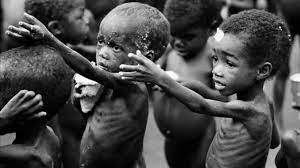The Kaduna State Government says it treated 7,361 malnourished children, representing 67.2 percent cure rate out of the 10,953 admitted between January and June.
Assistant State Nutrition Officer, Mr. George Adam, made this known at the 2nd quarter Coordination Meeting of the state Committee on Food and Nutrition in Kaduna on Friday.
Adam explained that 2,730 were cured in the first quarter and 4,631 in the second quarter, while 31 children were lost to the scourge within the period, with others undergoing treatment.
He said that 67,574 mothers and caregivers were reached with nutrition messages in the period, out of which 3,656 were men, 7,834 grandmothers, and 12,206 women of childbearing age.
Adam said that others were 13,737 mothers of babies of six to 23 months, 15,379 mothers of six months old children and 14,762 were also reached with nutrition messages.
He added that more health workers from 100 facilities in 12 local government areas were trained on the Accelerating Nutrition Result in Niger maternal infant and young child feeding healthcare intervention.
Mrs. Phoebe Yayi, the Permanent Secretary, Planning and Budget Commission (PBC), who presided over the meeting, said the state government was doing its best to support the implementation of nutrition activities.
Yayi explained that the coordination of the multi-sector response to malnutrition was key to achieving maximum results, urging all relevant Ministries, Departments and Agencies (MDAs) to play their roles.
She also urged nutrition-line MDAs to make judicious use of available funds to ensure that nutrition services get to women and children in all the nook and crannies of the state.
Earlier, Mr. Salisu Baba, Director, Development Aid Coordination, PBC, explained that the objective of the meeting was to ensure sustainable food and nutrition programme coordination in the state.
According to Baba, this will enable the committee to set clear goals in enhancing multi sectoral food and nutrition programming in the state.
“The meeting is to also get updates on programmes implemented by relevant MDAs and identify ways to achieve maximum impact on women and children.
“We also want to identify challenges and opportunities of improving food and nutrition activities in the state.”

